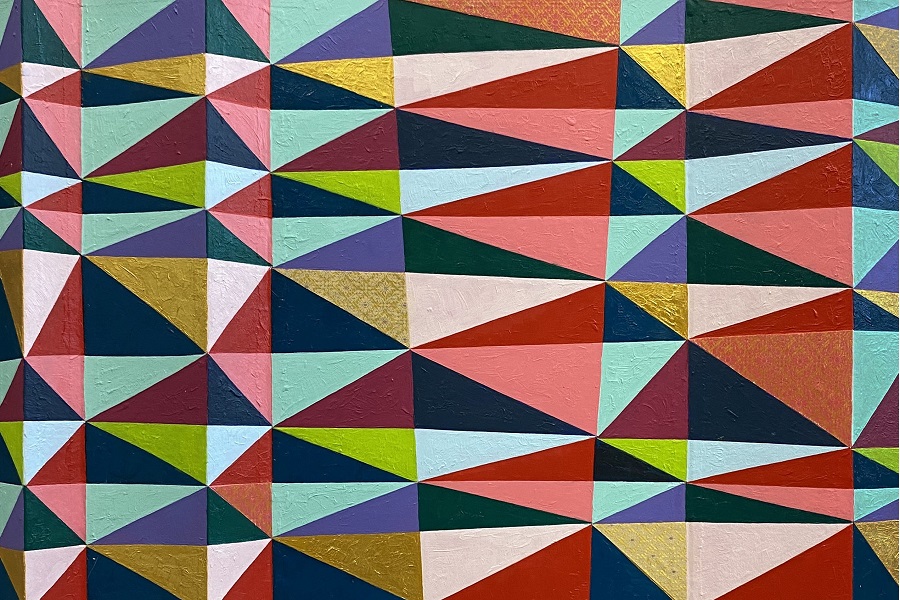Visual Art / Pattern/colour/space/form, by Al Munro. At Australian National Capital Artists, Dickson, until March 9. Reviewed by ROB KENNEDY.
This exhibition is a continuation of Al Munro’s exploration into the complex interplay of color, pattern and spatial relationships within the realm of painting.
Canberra-based artist Al Munro is interested in painting, print, textiles and drawing-based art practices. Her works are informed by a diverse range of sources, including philosophy.
On the surface of some of the paintings featured in this exhibition, fold-like corrugations project and change the physical view of the artwork. This creates an interplay of light and shapes across the surface.
As a viewer moves past a work, shifts in perspectives reveal patterns in the artwork, creating a vibrant visual experience. Shifting viewpoints expose a kaleidoscope of changing patterns and forms, making each observation unique.
Even though these works could be seen as just patterned, multi-coloured constructions, it’s the intricate trickery of their designs that reveals an artist of great depth at work.
In Munro’s Pattern Distortion 3, 2024, acrylic on boxboard and wood panel, which is one with a raised surface, there’s that visual illusion on display, not just in the artwork but the undulating surface adds layers to its psychological story.
Some have a textured or patterned shapes, made of Thai silk or polyester. These shiny sections change not only the surface effect but also the visual conversation they exude.
There are 25 works of varying sizes on display: all unique in their visual story. Yet, I can’t say they hold emotional content, but the technical aspects are so enticing, to the point where an onlooker could say that every work offers a different conversation or altered viewpoint.
Even though they are all multi-coloured, each has its own palette choice and shape design. This creates another level of interest and attraction. Then, are the patterns and shapes set up horizontally, vertically, or diagonally? They keep a viewer guessing because, when seen from varying angles, the patterns, and shapes change.
Is this to trick the viewer and keeps them guessing? Or is it to leave the artistic possibilities open to the viewer? Whatever it is, it works.
Unlike many abstract artworks that contain a single idea or viewpoint, these say many things, which are dependent on how a viewer sees them and what effect the viewer chooses to add.
I feel they are more than just artistically clever. Each has its own language, and it sets up a viewer to translate that into whatever language works best for them. None of this is accidental, which shows an artist thinking and creating beyond a standard scope.
Who can be trusted?
In a world of spin and confusion, there’s never been a more important time to support independent journalism in Canberra.
If you trust our work online and want to enforce the power of independent voices, I invite you to make a small contribution.
Every dollar of support is invested back into our journalism to help keep citynews.com.au strong and free.
Thank you,
Ian Meikle, editor






